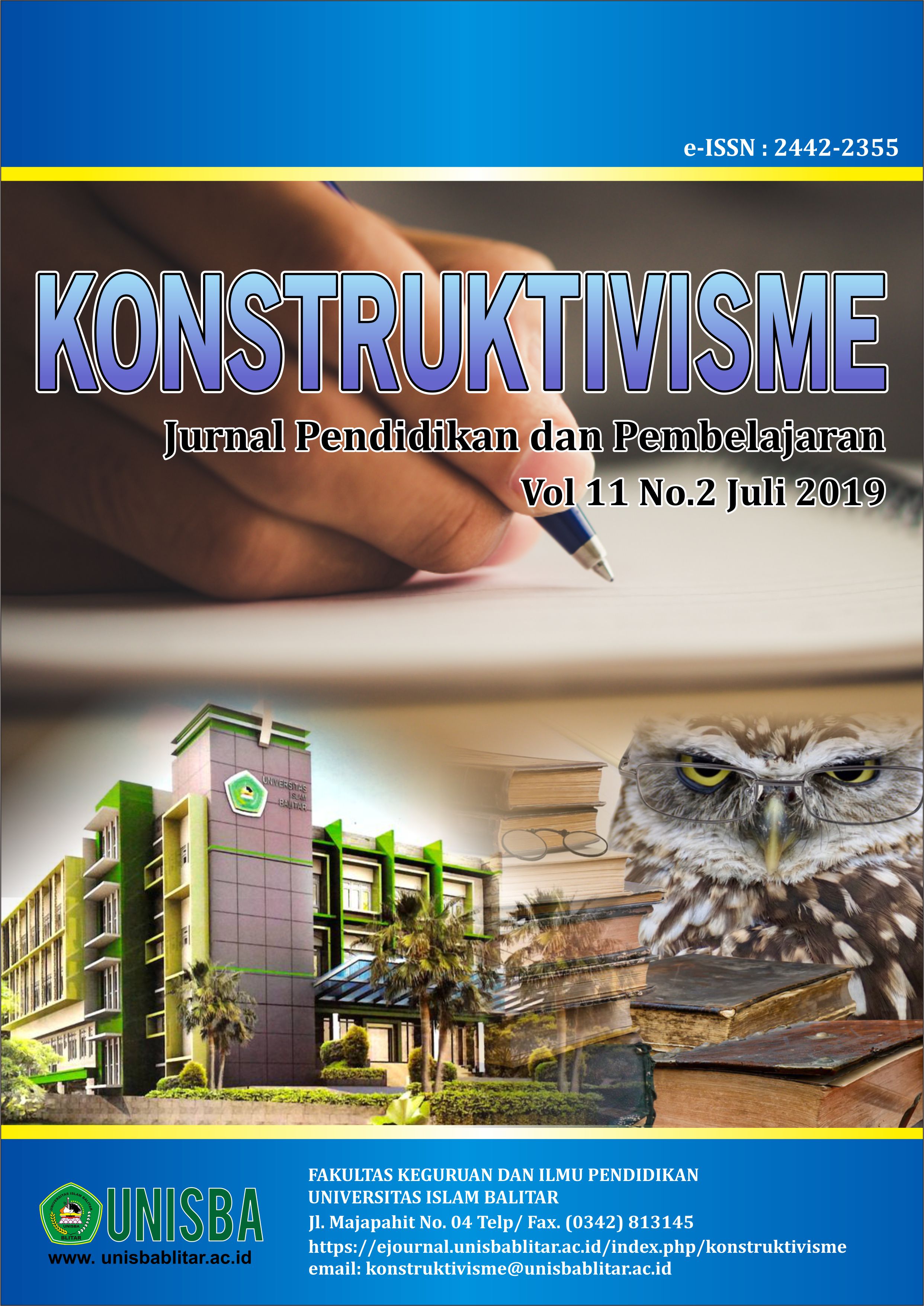REDEFINING LEARNING PROCESS THROUGH FLIPPED CLASSROOM
DOI:
https://doi.org/10.35457/konstruk.v11i2.719Keywords:
redefinition, learning process, flipped classroomAbstract
This study addresses the implementation of the flipped classroom in redefining the traditional learning process in higher education. The data were collected by observing the learning process of Advanced Listening course, which was set up in a flipped classroom mode. The data of observation showed that the steps in the flipped classroom were as follows: (1) learning the materials (beyond the classroom); (2) taking notes and preparing questions (beyond the classroom); (3) presenting the materials (inside the classroom); and (4) discussing the materials (inside the classroom). The findings suggest that educators should start flipping the classroom since it provides a lot of educational benefits.
Downloads
References
Bergman, J., & Sams, A. (2014). The flipped classroom, CSE, 17(3), 24-27.
Chilingaryan, K., & Zvereva, E. (2016). Methodology of flipped classroom as a learning technology in foreign language teaching. Procedia – Social and Behavioral Science, 237(2017), 1500-1504.
Du, S., Fu, Z., & Wang, Y. (2014). The flipped classroom–advantages and challenges. International Conference on Economic Management and Trade Cooperation, 17-20.
Eppard, J., & Rochdi, A. (2017). A framework for flipped learning. 13th International Conference Mobile Learning.
Evseeva, A., & Solozhenko, A. (2015). Use of flipped classroom technology in language learning. Procedia – Social and Behavioral Science, 206(2015), 205 – 209.
Fauzi, A., Rochsantiningsih, D., & Tarjana, S. S. (2018). ICT acceptance of Indonesian teachers in TEFL: A case study of senior high school EFL teachers (Unpublished master’s thesis). Sebelas Maret University, Surakarta.
Fauziati, E. (2016). Principles of foreign language teaching, learning, and researching. Surakarta: Era Pustaka Utama
Miles, M. B., & Huberman, A. M. (1994). Qualitative data analysis (2nd.). London: Sage Publications.
Puentedura, R. (2009). Technology, change, and process. Retrieved from http://hippasus.com/resources/actem2009/TechnologyChangeProcess. pdf
Soliman, N, A. (2016). Teaching English for academic purposes via the flipped learning approach. Procedia – Social and Behavioral Science, 232(2016), 122-129.
Vygotsky, L. (1978). Mind in society. Cambridge MA: Harvard University Press.
Webb, M., Doman, E., & Pusey, K. (2014). Flipping a Chinese university EFL course: What students and teachers think of the model. The Journal of ASIA TEFL, 11(4), 53-87.
Downloads
Published
Issue
Section
License
Authors who publish with this journal agree to the following terms:
- Authors retain copyright and grant the journal right of first publication with the work simultaneously licensed under a Creative Commons Attribution License that allows others to share the work with an acknowledgement of the work's authorship and initial publication in this journal.
- Authors are able to enter into separate, additional contractual arrangements for the non-exclusive distribution of the journal's published version of the work (e.g., post it to an institutional repository or publish it in a book), with an acknowledgement of its initial publication in this journal.
- Authors are permitted and encouraged to post their work online (e.g., in institutional repositories or on their website) prior to and during the submission process, as it can lead to productive exchanges, as well as earlier and greater citation of published work (See The Effect of Open Access).
Deprecated: json_decode(): Passing null to parameter #1 ($json) of type string is deprecated in /home/ejournal.unisbablitar.ac.id/public_html/plugins/generic/citations/CitationsPlugin.php on line 68












